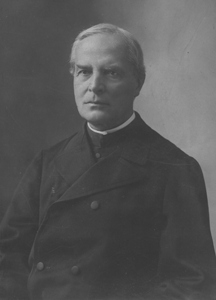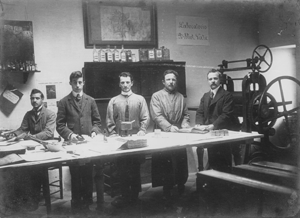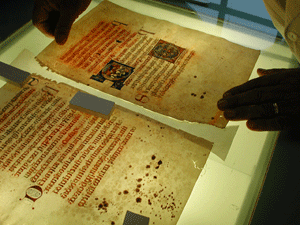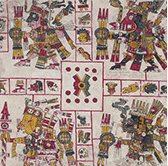Conservation Workshop
HISTORICAL NOTES
The pontifical library has sought to protect and preserve its collections from the earliest times. In view of this, Pope Sixtus IV, in his bull Ad Decorem Militantis Ecclesiae (1475),
named Bartolomeo Platina as gubernator et custos, making him responsible for the preservation of the volumes and the growth of the collection. The figure of the famulus appeared as early as
the fifteenth century, with the responsibility of defending the books from damage caused by humidity, by dust and by insects. In 1555, Paul IV officially instituted the figure of the restorer,
entrusting this function to Niccolò Fery.1.

Restoration involved the bookbinders as well as the scriptores, according to the type of work which was required. Indeed, the interventions of that time "often went beyond what is included in
the modern concept of restoration" and involved not only "the replacement of damaged bindings and the application of patches to the paper, [...] but also the rewriting of faded letters,
and indeed the transcription of entire pages, if they were irreparably damaged" (Furia).
Considerable attention was also paid to preventive measures, as evidenced, for example, in the writings of Angelo Rocca, the secretary to Sixtus V who dedicated one of the chapters of his description of
the Vatican Library 4 (1591) specifically to the conservation of books: he begins with a description of the architectural features which favor the preservation of the collections, proceeds to
prescribe periodical dust removal, and then enters into the details of the recipe for flour glue (Furia).
Throughout the centuries, many figures of the Library have made an important contribution to the history of book conservation.
For example, Fr. Antonio Piaggio, keeper of miniatures and scriptor, is famous for the experiments which led him, in 1753, to invent special equipment for unrolling the papyrus scrolls of Herculaneum (Furia).
The person who showed the greatest awareness of the importance of conservation and restoration, and who made the greatest contribution to improve the basic principles of this practice, was Franz Ehrle.
Prefect of the Library from 1895 to 1914, he systematically studied the paper manuscripts which had been severely damaged by ink corrosion and the palimpsests which had been ruined only a few years earlier by
chemical reagents applied in order to increase their legibility. He soon arrived at the conclusion that restoration could not proceed without a scientific study of the causes of the damage and without ensuring that
the instruments used were effective and that their effects were both durable and reversible.
It was upon his initiative that a conference was held in 1898 at the Abbey of St. Gall, "which today is considered the historical point of departure for the modern era of book restoration" (Furia).
1Brief, Vatican Secret Archive, Arm. LII, vol. 1, f. 193v.
2Vatican Library, Archive of the Library, 28, ff. 84v, 54r, 71v.
3Vatican Library, Archive of the Library, 28, f. 22r.
4A. Rocca, Bibliotheca Vaticana a Sixto V Pont. Max. in splendidiorem commodioremque locum translata, Romae, ex Typographia Apostolica Vaticana, 1591.
THE WORKSHOP

The staff continue a long tradition, especially in the field of restoring parchment leaves of manuscripts. In addition, the Workshop has been able to integrate this old tradition with more recent approaches which view
restoration as an opportunity for archeological study.

Because they are aware that any restoration operation implies a trauma and a loss of information, the staff seek to intervene as discretely as possible, while still ensuring the continued functionality of the object.
È Every phase of every intervention is documented with a detailed description, supported by digital images, which mentions the materials and the techniques used. It is planned to insert all the data
collected to date into a provisional database. It will eventually also include data about interventions performed since 1920, which is kept today in paper registers. This system will make it easier in the future to
research and evaluate the most appropriate procedures and materials, in accordance with the views of Cardinal Ehrle.
The preventive care of book materials has greatly increased over the centuries and has progressively adopted new technologies. In 1983 new, underground stacks were built for the manuscripts, incorporating the most
innovative preventive measures (Federici).
Dust removal and disinfestation of books have always been carried out with the latest available materials and systems; in particular, in 2000 we began a disinfestation project using anoxic systems, as well as
a systematic dust removal program, which has necessitated the employment of support staff.
BIBLIOGRAPHY
Bignami Odier, J.: La bibliothèque Vaticane de Sixte IV à Pie XI. Recherches sur l’histoire des collections de manuscrits, Studi e testi, 272, Città del Vaticano, 1973.Ehrle, F.: Della Conferenza Internazionale di San Gallo (1898), in Rivista delle biblioteche e degli archivi, XX, 1909, pp. 113-132.
Ehrle, F.: Della conservazione e del restauro dei manoscritti antichi, in Rivista delle biblioteche e degli archivi, IX, 1898, pp. 5-11, 19-25.
Federici, C.:Il progetto di riqualificazione del deposito manoscritti della Biblioteca Apostolica Vaticana, in Biblioteche oggi, ottobre 2007, pp. 47-52.
Furia, P.: Storia del restauro librario; Istituto Centrale per la Patologia del Libro, Editrice Bibliografica, 1992.
Iori, C.: Laboratorio di restauro dei codici presso la Biblioteca Apostolica Vaticana, dattiloscritto, 1970.
Petrucci Nardelli, F.: Legatori vaticani, in Mercurius in trivio, Ed. Bulzoni; Roma, 1993, pp. 153-161.
CONTACT DETAILS
- PERSON IN CHARGE Dr. Angela Nuñez Gaitan: contact by email
- Telephone: +39/06698.79413 - +39/06698.79415
- OFFICE: contact by email





